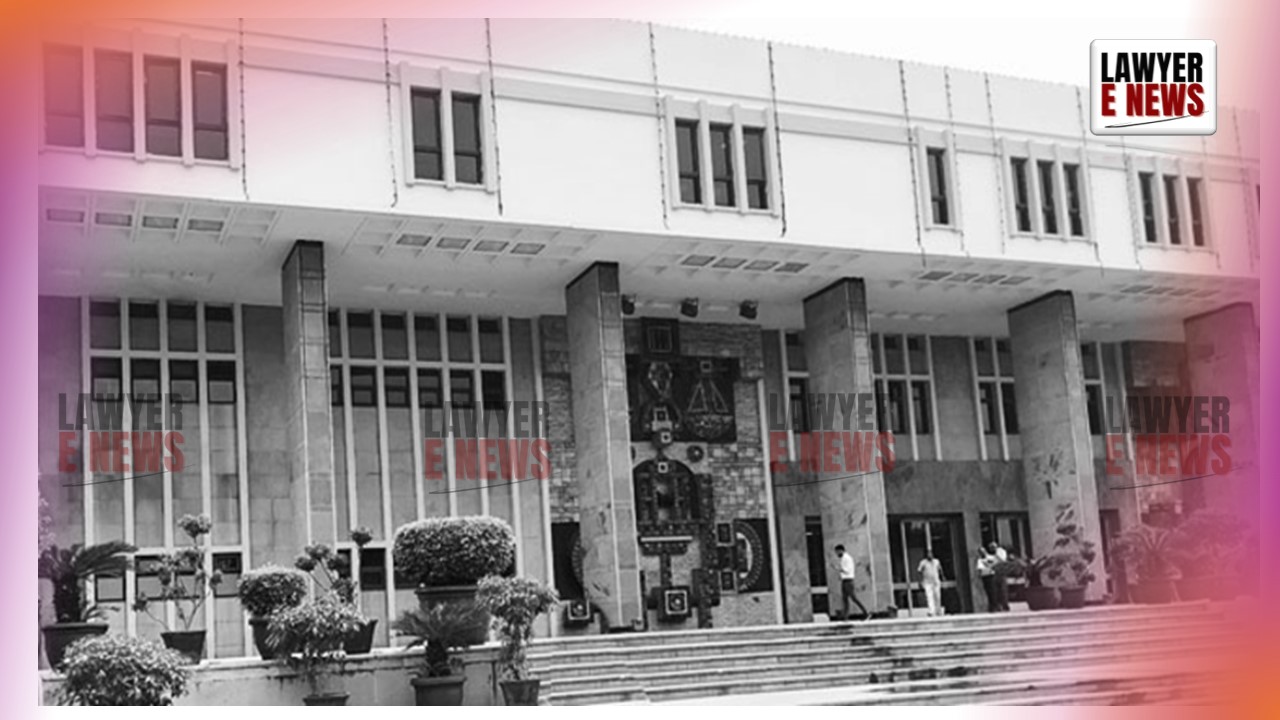-
by Admin
19 December 2025 12:13 AM



Delhi High Court dismissed the appeals of Sameer and Imran @ Murgi Chor, upholding their convictions under Sections 302, 120-B, 392, and 411 IPC for the murder and robbery of 78-year-old Smt. Anna Mammen. The Division Bench of Justice Prathiba M. Singh and Justice Dharmesh Sharma held that the prosecution had established a complete and unbroken chain of circumstantial evidence linking the accused to the crime.
"The presence of the accused near the victim's residence just before the incident, the forensic fingerprint analysis, the recovery of stolen gold and cash from locations identified by them, and the call detail records all point unmistakably to their guilt," the Court observed, rejecting the defense’s claims of fabrication and false implication.
On March 8, 2011, a PCR call alerted the police to the murder of Smt. Anna Mammen, a retired school teacher, at her residence in Vivek Vihar, Delhi. She was found strangled to death with a juicer mixer wire, her house ransacked, and valuables missing. A case of robbery and murder (FIR No. 72/2011) was registered.
The investigation led to Imran (A-1) and Sameer (A-2), who were last seen near the crime scene just before the murder. Eight chance fingerprints were lifted from the victim’s house, later matched to the accused. Call detail records (CDRs) placed them near the crime scene at the time of the murder. Gold jewelry and cash stolen from the victim were recovered from locations disclosed by the accused.
The trial court convicted both accused on May 8, 2019, sentencing them to life imprisonment, which they challenged before the High Court.
Circumstantial Evidence – A Complete and Unbroken Chain of Guilt
The Court reaffirmed the importance of circumstantial evidence in cases where direct witnesses are unavailable. It noted:
"The prosecution successfully established a chain of circumstances, each link strengthening the next, leaving no reasonable doubt about the accused’s guilt."
This included the last-seen theory, forensic evidence, CDR analysis, and recovery of stolen items, all of which pointed squarely to the accused.
Last-Seen Theory – Reliability of the Deceased’s Maid’s Testimony
The maidservant of the deceased, PW-6 Laxmi, testified that she saw Imran (A-1) and another person (later identified as Sameer, A-2) near the crime scene at 1:30 PM—shortly before the murder.
"The testimony of a long-term maidservant, who had worked with the victim for over 20 years, is beyond reproach. Her presence at the house daily made her an essential witness, and there is no evidence to suggest she had any motive to falsely implicate the accused," the Court ruled.
The Court dismissed the defense's argument that the maid’s late disclosure weakened the case, holding that her emotional distress at seeing her employer murdered was a natural reaction and did not make her testimony unreliable.
Forensic Evidence – Fingerprint Analysis Corroborates Other Evidence
Eight chance fingerprints were lifted from the crime scene, including from the juicer mixer, wooden almirah, and bed. These were matched to A-1 and A-2 by forensic experts.
"The forensic evidence was collected, preserved, and examined following due process. The expert report under Section 293 CrPC is admissible and corroborates other circumstantial evidence," the Court observed.
The defense’s attempt to cast doubt on mismatched dates in forensic records was dismissed as "trivial and inconsequential."
Recovery of Stolen Articles – Strong Presumption of Guilt Under Law
Gold jewelry and cash were recovered from locations disclosed by the accused. The Court relied on Supreme Court precedents to affirm the evidentiary value of such recoveries.
"When stolen property is recovered from locations exclusively known to the accused, a strong presumption arises that they were involved in the crime," the Court held, citing A.N. Venkatesh v. State of Karnataka and Geejaganda Somaiah v. State of Karnataka.
The defense's plea that disclosure statements were inadmissible was rejected, as the actual recoveries independently corroborated the statements.
Call Detail Records – Confirming Accused’s Presence at Crime Scene
The CDRs of both accused placed them near the victim’s house at the exact timeframe of the crime.
"The accused used their phones before and after the incident but remained completely inactive from 1:16 PM to 3:39 PM, precisely when the crime occurred. This deliberate silence, combined with their location data, is a telling circumstance," the Court noted.
Defense's False Implication Theory Rejected as "Baseless and Frivolous"
The accused argued that they were falsely implicated due to pressure from the victim’s family, but the Court found this contention devoid of merit.
"Mere allegations of influence, without evidence, cannot override strong forensic and documentary evidence. Raising such baseless claims amounts to an abuse of process," the Court remarked.
The High Court dismissed the appeals, maintaining the convictions and life sentences of the accused.
"The prosecution has successfully proven that the offenses of robbery and murder were committed as part of the same transaction. The accused were absconding soon after the crime and were found in possession of stolen goods, leaving no doubt about their culpability."
The Court upheld the trial court’s judgment dated May 8, 2019, and the order on sentence dated May 15, 2019, rejecting all grounds for interference.
Date of decision: 19 February 2025
